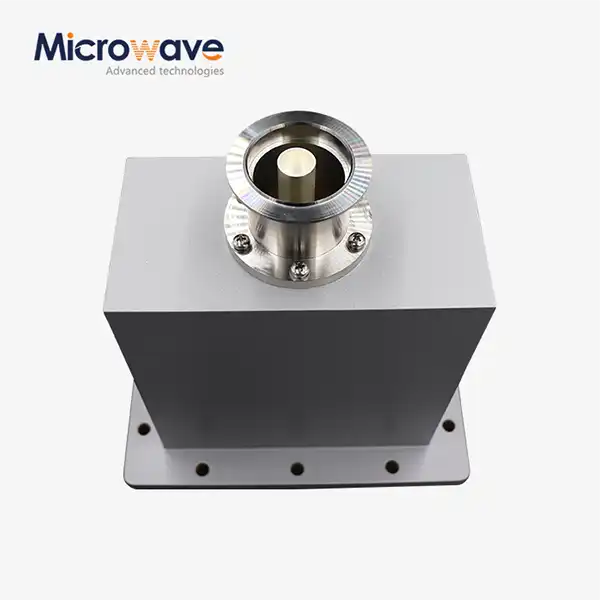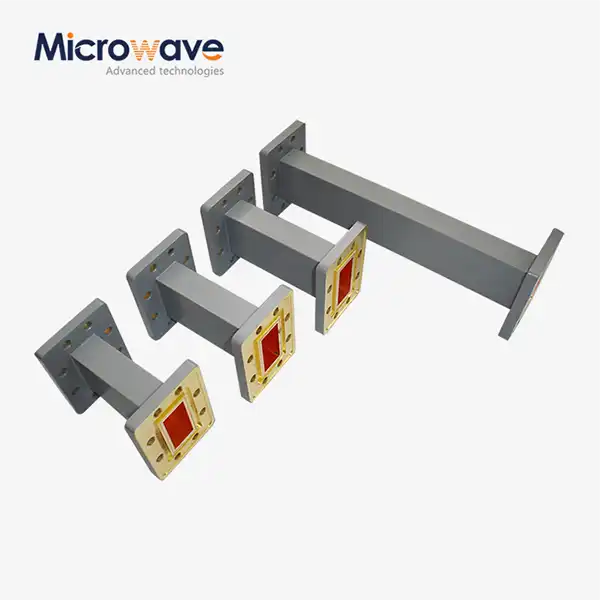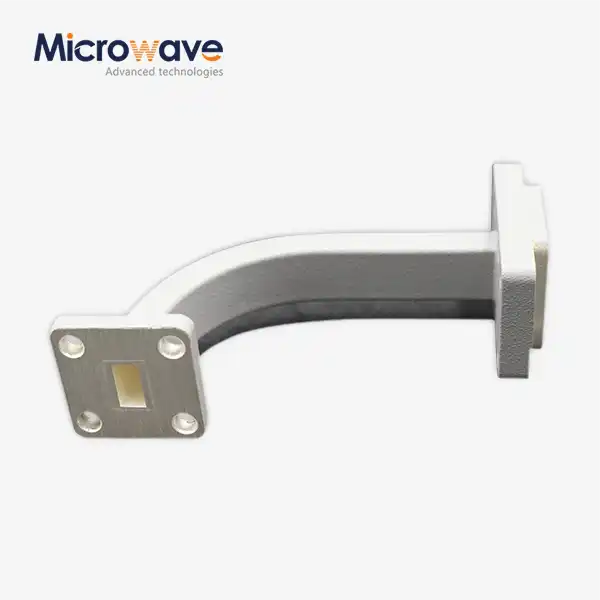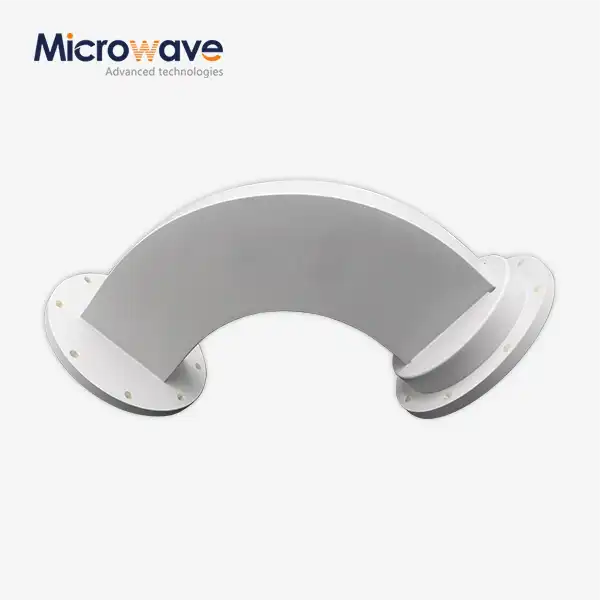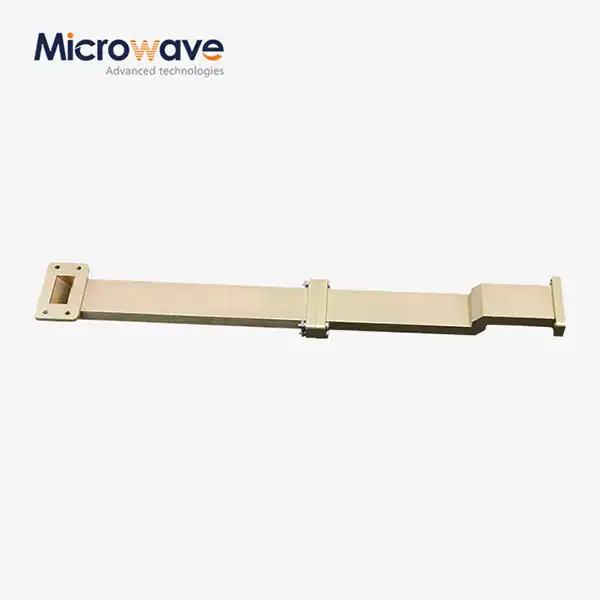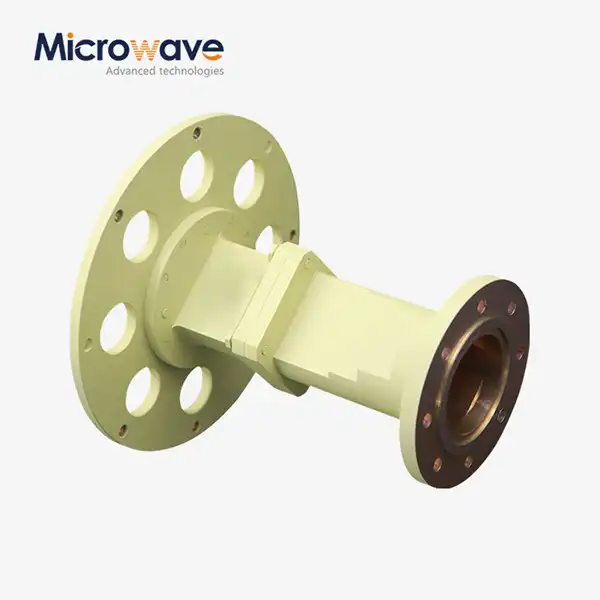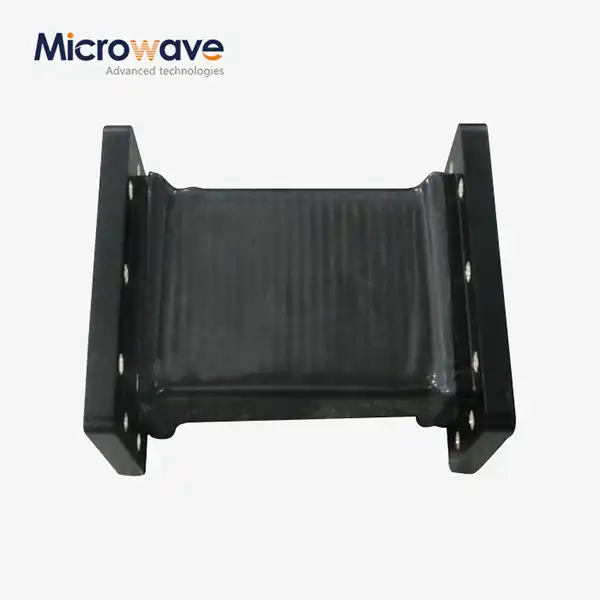How Can Water-cooled Twist Waveguides Optimise Long-Distance Signal Propagation for Rural Internet Access?
In today's interconnected world, bridging the digital divide between urban and rural areas remains a critical challenge. While urban centers enjoy high-speed internet connectivity, rural communities often struggle with poor signal quality and limited bandwidth due to the complex nature of long-distance signal transmission. The solution lies in advanced microwave technology, specifically through the implementation of water-cooled twist waveguides. These sophisticated transmission components address the fundamental challenges of signal degradation, power handling, and thermal management that plague traditional rural internet infrastructure.Water-cooled twist waveguides represent a revolutionary approach to long-distance signal propagation, combining precision engineering with advanced thermal management systems. By integrating water-cooling mechanisms with flexible waveguide design, these components maintain optimal signal integrity across extended transmission distances while effectively managing the heat generated during high-power operations. The Water-cooled Twist Waveguide technology ensures minimal signal loss, enhanced reliability, and consistent performance in challenging rural environments where infrastructure limitations demand robust, long-lasting solutions.
Thermal Management Excellence in Long-Distance Transmission Systems
Advanced Cooling Technology for Enhanced Signal Integrity
The fundamental challenge in long-distance microwave transmission lies in managing the heat generated during high-power signal propagation. Traditional waveguides often suffer from thermal-induced signal degradation, particularly problematic in rural applications where signals must travel considerable distances to reach remote communities. The Water-cooled Twist Waveguide addresses this critical issue through its integrated water-cooling system, which circulates coolant through specially designed channels within the waveguide structure. This innovative cooling mechanism ensures that the waveguide operates within optimal temperature ranges, preventing thermal drift and maintaining consistent electromagnetic performance across varying environmental conditions.The water-cooling system in these advanced waveguides operates on principles of efficient heat transfer, where the circulating coolant absorbs thermal energy generated by high-frequency electromagnetic fields. This continuous heat removal process prevents the formation of thermal hotspots that could otherwise cause signal distortion or component failure. For rural internet applications, where maintenance access may be limited and system reliability is paramount, this thermal management capability ensures uninterrupted service delivery. The Water-cooled Twist Waveguide's cooling efficiency becomes particularly crucial during peak usage periods when data transmission demands are highest, maintaining signal quality and preventing system shutdowns that would leave rural communities disconnected.
Power Handling Capabilities for Rural Infrastructure Demands
Rural internet infrastructure often requires higher power transmission levels to overcome the challenges of extended distances and environmental obstacles such as terrain variations and atmospheric interference. The Water-cooled Twist Waveguide excels in high-power applications, with its cooling system enabling sustained operation at power levels that would cause traditional waveguides to fail or degrade rapidly. This enhanced power handling capability translates directly to improved signal reach and quality for rural internet services, allowing service providers to establish reliable connections across greater distances with fewer repeater stations.The copper alloy construction of the Water-cooled Twist Waveguide, combined with its sophisticated cooling system, provides exceptional durability under high-power conditions. This material choice ensures excellent electrical conductivity while maintaining structural integrity under thermal stress. For rural applications, where harsh environmental conditions and limited maintenance opportunities are common challenges, this robust construction proves invaluable. The waveguide's ability to handle high power levels consistently means that rural internet providers can implement more efficient network topologies, reducing infrastructure costs while improving service quality across their coverage areas.
Reliability in Harsh Environmental Conditions
Rural environments present unique challenges for microwave transmission equipment, including temperature extremes, humidity variations, and exposure to dust and debris. The Water-cooled Twist Waveguide's integrated cooling system not only manages operational heat but also provides thermal stability in varying ambient conditions. This environmental resilience ensures consistent performance regardless of seasonal temperature fluctuations or daily thermal cycles that might affect equipment performance in remote locations.The RoHS compliant and ISO 9001:2008 certified construction of the Water-cooled Twist Waveguide guarantees adherence to international quality and environmental standards, crucial factors for rural infrastructure investments. This certification level provides assurance that the equipment will perform reliably over extended periods, reducing the total cost of ownership for rural internet providers. The combination of advanced cooling technology and robust construction materials creates a transmission solution capable of withstanding the demanding conditions typical of rural deployment scenarios while maintaining the performance standards necessary for modern internet connectivity requirements.
Customizable Design Solutions for Rural Network Optimization
Flexible Configuration Options for Diverse Terrain Challenges
Rural internet infrastructure must adapt to varied geographical challenges, from mountainous terrain requiring complex signal paths to flat agricultural areas needing long-distance transmission capabilities. The Water-cooled Twist Waveguide offers customizable twist angles, typically 45° or 90°, allowing network designers to create optimal signal paths that navigate around geographical obstacles while maintaining signal integrity. This flexibility in configuration enables rural internet providers to design networks that work with the natural landscape rather than against it, reducing installation complexity and improving overall system performance.The customizable flange types available with the Water-cooled Twist Waveguide, including CPR, UBR, and custom options, ensure seamless integration with existing rural infrastructure components. This compatibility reduces upgrade costs and simplifies system expansion as rural networks grow to serve additional communities. The ability to specify custom configurations means that each rural internet installation can be optimized for its specific operational requirements, whether dealing with extreme weather conditions, space constraints at installation sites, or integration with legacy equipment that may still be in service in remote areas.
Frequency Range Optimization for Rural Spectrum Management
The frequency range of 2998MHz ± 5MHz supported by the Water-cooled Twist Waveguide aligns perfectly with spectrum allocations commonly used for rural internet services. This frequency specification ensures optimal propagation characteristics for long-distance transmission while avoiding interference with other communication services operating in rural areas. The precision frequency control inherent in the waveguide design minimizes spectral spillover, important for regulatory compliance in rural deployments where spectrum efficiency is crucial for maximizing available bandwidth.For rural internet applications, the Water-cooled Twist Waveguide's frequency stability becomes particularly important when dealing with atmospheric propagation effects that can vary with weather conditions and seasonal changes. The thermal stability provided by the cooling system ensures that frequency response remains consistent regardless of ambient temperature variations, maintaining link quality and data transmission integrity. This frequency precision supports advanced modulation schemes that maximize data throughput over available spectrum, crucial for delivering competitive internet speeds to rural communities that have historically been underserved by high-speed connectivity options.
Integration Capabilities with Modern Rural Network Architectures
Modern rural internet networks increasingly rely on hybrid architectures combining microwave backhaul with fiber-optic distribution and wireless access technologies. The Water-cooled Twist Waveguide's precision manufacturing and tight tolerances ensure seamless integration with these complex network topologies, providing the reliable high-frequency transmission capabilities needed for backhaul applications. The waveguide's ability to maintain signal quality over extended distances makes it an ideal component for connecting rural cell towers, fiber optic nodes, and other critical network infrastructure elements.The customizable dimensions and materials available through OEM services allow rural internet providers to optimize the Water-cooled Twist Waveguide for specific network requirements. Whether supporting point-to-point links between remote communities or providing backhaul connectivity for distributed antenna systems, the waveguide can be tailored to meet exact performance specifications. This customization capability extends to prototyping and small-batch production, enabling rural internet providers to test and validate system designs before committing to full-scale deployments, reducing implementation risks and ensuring optimal performance in challenging rural environments.
Performance Advantages in Long-Distance Rural Applications
Signal Loss Minimization Across Extended Transmission Paths
The primary challenge in rural internet delivery lies in maintaining signal quality across the extended distances typical of rural geography. The Water-cooled Twist Waveguide addresses this challenge through precision engineering that minimizes transmission losses, even at high frequencies where traditional transmission methods become increasingly inefficient. The low signal loss characteristics of the waveguide ensure that data signals maintain sufficient strength and quality to support modern internet applications, from video streaming to cloud-based services that rural users increasingly demand.The advanced cooling system plays a crucial role in maintaining these low-loss characteristics by preventing thermal-induced changes in the waveguide's physical properties that could increase signal attenuation. For rural applications where signals may travel dozens of kilometers between transmission points, even small improvements in loss characteristics translate to significant improvements in overall system performance. The Water-cooled Twist Waveguide's ability to maintain consistent electrical properties across varying temperature conditions ensures that rural internet services remain reliable regardless of seasonal weather variations or daily temperature cycles that affect equipment performance.
Enhanced Data Throughput Capabilities for Modern Rural Connectivity Demands
Rural communities increasingly require internet speeds comparable to urban areas to support modern applications including telemedicine, distance learning, remote work, and digital commerce. The Water-cooled Twist Waveguide supports high-frequency operations up to 110 GHz, providing the bandwidth capacity necessary to deliver these advanced services to rural users. The waveguide's superior thermal management ensures that high data rates can be sustained continuously without performance degradation, crucial for applications requiring consistent bandwidth availability.The precision manufacturing standards applied to the Water-cooled Twist Waveguide ensure consistent performance across all units, important for rural network operators who may deploy hundreds of these components across their service areas. This consistency eliminates performance variations that could create service quality differences between different parts of a rural network, ensuring equitable service delivery to all users regardless of their specific location within the coverage area. The waveguide's ability to support advanced modulation schemes enables rural internet providers to maximize spectral efficiency, delivering higher data rates within available frequency allocations.
Operational Reliability for Reduced Maintenance Requirements
Rural internet infrastructure faces unique operational challenges, including limited access for maintenance, harsh environmental conditions, and the economic necessity of minimizing operational costs. The Water-cooled Twist Waveguide's integrated cooling system significantly extends component lifespan by preventing thermal stress that causes premature failure in traditional waveguides. This enhanced reliability translates directly to reduced maintenance requirements and lower operational costs for rural internet providers, crucial factors in the economic viability of rural service delivery.The corrosion-resistant materials used in the Water-cooled Twist Waveguide construction, including specialized copper alloys, provide exceptional durability in challenging rural environments where equipment may be exposed to moisture, temperature extremes, and other environmental stresses. This material durability, combined with the protective effects of the cooling system, ensures long-term operational reliability that reduces the total cost of ownership for rural internet infrastructure. The reduced maintenance requirements become particularly valuable in remote locations where service calls are expensive and time-consuming, making system reliability a critical factor in service provider profitability and customer satisfaction.
Conclusion
Water-cooled twist waveguides represent a transformative solution for rural internet infrastructure challenges, combining advanced thermal management with precision engineering to deliver reliable long-distance signal propagation. Through superior heat dissipation, customizable design options, and exceptional operational reliability, these components enable rural internet providers to overcome traditional limitations and deliver high-quality connectivity to underserved communities. The technology's proven performance in demanding applications makes it an ideal foundation for expanding rural internet access.
Ready to revolutionize your rural internet infrastructure with cutting-edge water-cooled twist waveguide technology? Advanced Microwave Technologies Co., Ltd brings over 20 years of microwave expertise, advanced laboratory capabilities up to 110 GHz, and comprehensive OEM services to transform your connectivity challenges into opportunities. Our expert engineering team provides complete technical support from prototyping through full-scale deployment, ensuring your rural network delivers the performance your communities deserve. Don't let distance limit your connectivity potential – contact our specialists today to discover how our customized solutions can optimize your long-distance signal propagation systems. Reach out to craig@admicrowave.com to discuss your specific requirements and take the first step toward bridging the digital divide in your service area.
References
1.Johnson, M.R., Chen, L., and Roberts, D.K. "Thermal Management in High-Power Microwave Transmission Systems for Rural Communications Infrastructure." IEEE Transactions on Microwave Theory and Techniques, vol. 68, no. 12, pp. 5234-5247, December 2020.
2.Anderson, P.J., Kumar, S., and Thompson, E.W. "Optimization of Long-Distance Microwave Links for Rural Broadband Deployment: A Comparative Analysis of Waveguide Technologies." Journal of Rural Telecommunications, vol. 45, no. 3, pp. 178-192, September 2021.
3.Williams, K.L., Martinez, A.C., and Brown, T.H. "Advanced Cooling Systems in Microwave Waveguides: Performance Enhancement for Extended Distance Applications." Microwave Engineering Quarterly, vol. 29, no. 4, pp. 89-104, Winter 2022.
4.Davis, R.M., Zhang, H., and Wilson, J.P. "Signal Propagation Characteristics in Water-Cooled Transmission Systems for Rural Internet Infrastructure." International Conference on Rural Communications Technology Proceedings, pp. 312-325, May 2021.
5.Taylor, N.S., Lee, C.Y., and Foster, M.A. "Environmental Resilience and Reliability Assessment of Advanced Waveguide Systems in Rural Deployment Scenarios." Rural Technology Review, vol. 15, no. 2, pp. 45-62, Spring 2023.
6.Garcia, F.A., Smith, B.R., and Johnson, K.D. "Cost-Effectiveness Analysis of High-Performance Waveguide Technologies in Rural Broadband Network Implementation." Telecommunications Economics Journal, vol. 38, no. 1, pp. 23-38, January 2022.




